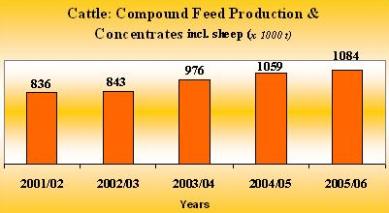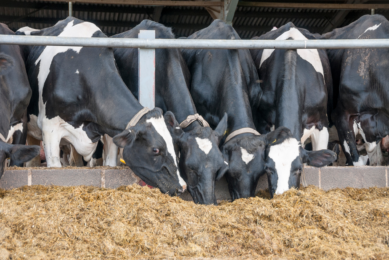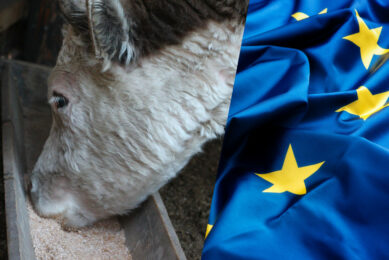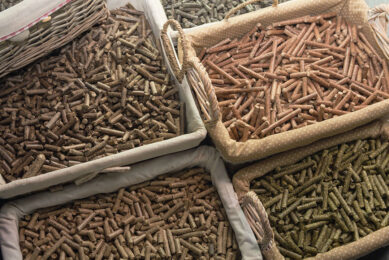Industrial Compound Feed Production

The National feed production in South Africa reflects the feed produced by both AFMA and non-AFMA members and it is based on the requirements of the livestock in the country. As the only calculation of its kind in South Africa, it is widely used by various role players in agriculture. This calculation was done in 2004 and was updated in 2006.
PRODUCTION
There was a shift in feed production between the formal
industry (AFMA members) and the rest of the industry. AFMA’s share of the total
feed requirements decreased from 59.15% in 2004 to 58.08% in 2006.
During 2005/06 feed sales increased by 3.46% to 4,462,088 tonnes. Total South
African compound feed production is estimated at 8,687,220 tonnes.
(Source: Animal Feed Manufacturers
Association, AFMA)
| Break-down of Total Feed Production (Other) |
The rate of increase in raw material prices slowed down and swung around to
decrease. This was mainly caused by the drop in maize price due to the
overproduction. Average annual growth of feed sales is around 3%. No detailed
data is available for feed sales of non-AFMA members.
| |
FEED
Feed for cattle can be split up in feed for dairy and for beef cattle. Also
feed for sheep is included and could not be extracted from the data. The figures
also include the volume of concentrates that has been sold. Concentrates take
less than 10% of feed sales.
Dairy feed takes the largest share of the cattle feed market. In 2005/06 a
little bit more than 560,000 tonnes were sold. This was a decrease of 10%
compared to the previous marketing year. However, dairy feed sales have showed
fluctuating figures in the previous years.
FEED
On the concentrate side, the impact of the large maize crop and lower maize
prices can clearly be seen with on farm mixing increasing, therefore only buying
concentrates from AFMA members. Growth in sales of more than 20% was achieved in
almost all categories except for pigs. This is reflected in the inconsistent
annual volumes that were sold.
The pig industry is however predominantly a home mixing market and the swing
towards pigs wouldn’t have been expected to be significant.
FEED
Poultry feed sales of AFMA members shows a gradual increase over the years.
Feed for broilers take about two thirds of total volume. Layer feed accounts
for about 20% of the sales and feed for broiler breeders has a 10% share of
total poultry feed volume.
In feed for layers there is a shift from compound feed (-1.65%) to
concentrates (+63%), but this does not compensate for the small decrease in
total layer feed. Feed sales for broilers shows a steady rise.
FEEDS
Other major feeds
that are produced in South Africa are feeds for horses, dogs, ostriches and
fish. The steady decline is mainly caused by the rapid deteriorating ostrich industry.
In 2001/2002 annual sales were 49,505 tonnes. In 2005/06 this figure came
down to 17,700 tonnes, a decline of more than 35%.
Fish feeds have almost doubled from a steady 1,700 tonnes in 2003/04 to 3,163
tonnes in 2005/06.
Furthermore in 2005/06 almost 19,500 tonnes of horse feed was sold by AFMA
members and about 33,200 tonnes of dry and wet dog food.
During the
last couple of years various changes took place in the feed
industry and more particularly amongst AFMA members. A number of new feed mills have
joined AFMA, some new feed mills were built, some were closed and various members
upgraded their feed mills.
In view of these changes, it was decided to conduct another capacity
utilisation survey in the industry to determine the current capacity. The survey
was done in July 2005 and the result was an utilisation of 75% which is
significantly less than the 86% that we have been using in recent
years.











